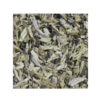Description
Burdock has been used for centuries to treat a variety of ailments. Traditionally, it has been used as a:
- “Blood purifier” to clear the bloodstream of toxins
- Diuretic to help eliminate excess water by increasing urine output
- Topical remedy for skin problems such as eczema, acne, and psoriasis
Medicinal uses of burdock have also been reported, in treating chronic diseases, such as cancers, diabetes, and AIDS.
Burdock can be used as a coffee substitute.
Burdock can be either taken alone or combined with other remedies, such as Yellow Dock and Sarsaparilla. One of the many beneficial effects of this herb includes increasing circulation to the skin and helping to detoxify the epidermal tissues. Burdock Root has been reported to destroy bacteria and fungus cultures.
Because burdock works on such deep seated problems and it brings the toxins to the service it can bring about a Healing Crisis. This is when the body starts to clean house and will eliminate toxicity, the results can be aches, pain and even worsening skin eruptions.
Burdock consists primarily of carbohydrates, volatile oils, plant sterols, tannins, and fatty oils. Researchers are not sure which active ingredients in burdock root are responsible for its healing properties though the herb does have anti-inflammatory, antioxidant, and antibacterial effects.
Recent studies show that burdock contains phenolic acids, quercetin, and luteolin, which are all powerful and potent antioxidants and as we know antioxidants reduce incidence of chronic disease and reduces the effects of aging.



